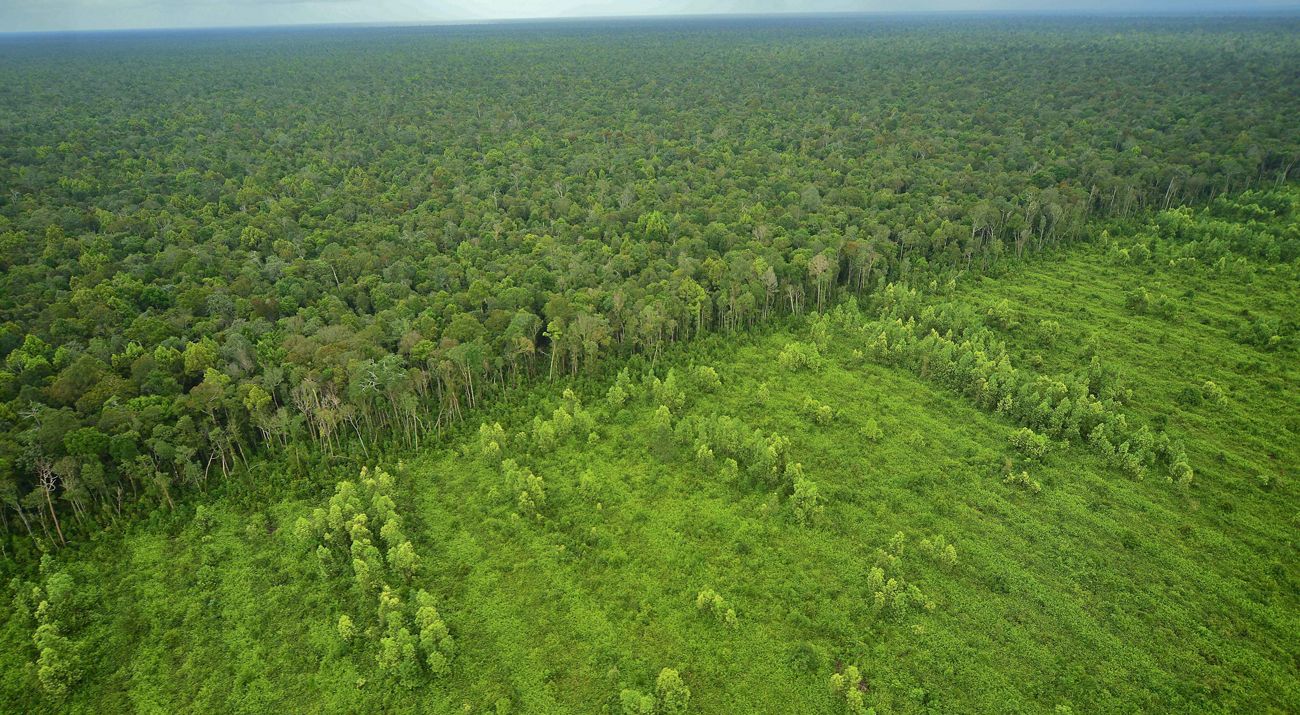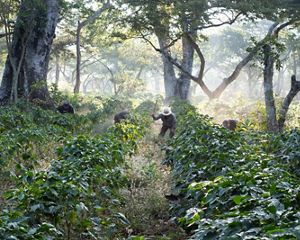Zero Conversion Commodities
What we are doing to stop habitat loss caused by commodity production.
Cattle, soy, palm oil underpin entire economies, support millions of rural livelihoods, and permeate our global food systems from farm to fork.
Demand for these ‘keystone commodities’ will continue to rise alongside rising incomes and changing diets in the global south, but commodity production is the single biggest driver of habitat and biodiversity loss globally, accounting for 40% of total habitat loss worldwide. Beef alone accounts for around 7% of global GHG emissions—about the same amount as India.
To meet this growing demand without fueling an increase in associated emissions and biodiversity loss, we need to decouple commodity production from habitat loss in our forests, grasslands and other ecosystems that risk being cleared to make way for farming.
How we are decoupling habitat loss from commodity production
Our Zero Conversation Commodities conservation strategy is aiming to transform the market for soy, cattle, and palm oil by enabling producers in the critical ecosystems of South America and Indonesia to meet growing demand without converting any more land for farming.
Zero Conversion Commodities Goals
-
Decouple soy and cattle production from habitat loss in the Amazon, Cerrado and Chaco by 2025.
-
Avoid the conversion of 9.5 million hectares of at-risk areas and prevent nearly 600 million metric tons of carbon emissions per year by 2030.
-
Transition palm oil production in Indonesia to be Deforestation and Conversion Free (DCF) before 2030.
-
Positive outcomes for Indigenous Peoples and local communities, whose lands will benefit from more sustainable practices at nearby farms.
3 challenges to reducing habitat loss from commodity production
Achieving zero conversion commodities must happen urgently and simultaneously across the whole market or habitat loss will just appear somewhere else.
To do this, the three main challenges we are aiming to overcome are:
- Inconsistent demand from the companies that buy commodities: The entire supply chain must become free from habitat loss. Certification has had an impact in parts of the supply chain, but habitat loss is still driven by the much larger demand for non-certified production.
- Inconsistent financial support and incentives for producers: Decoupling commodity production from conversion depends on the decisions farmers make about the habitat on their land. Currently, farmers and ranchers convert habitat because it makes economic sense. That calculation needs to be reversed.
- Counter-productive land use policies: Trade policies and regulations can be a force for change, but a straight ban on forest-risk imports without support measures for farmers can have the opposite effect. They look to other markets without bans and the habitat loss continues.
3 ways to reduce deforestation and habitat loss
We are working closely with partners in South America, Europe, Indonesia and China on three levers for change:
-
Engage directly with companies
Engage directly with companies and industry groups to help them implement and disclose credible progress on their commitments to eliminating deforestation and land conversion. To facilitate this, we are addressing the deeply rooted systemic factors that have normalized deforestation in agriculture and removing barriers that prevent companies from cleaning their supply chains.
-
Inform policy making
Inform policy making in South America, the EU, Indonesia, and China to ensure habitat protection on farms and ranches is rewarded, that land-use change is included in national climate change planning, and that incentives and structures that currently favor agricultural expansion are reworked to channel expansion to already cleared land.
How we’re helping ranchers reduce land conversion from cattle
Cattle ranching is a significant part of Brazil’s economy but results in 24% of all tropical forest loss every year. This mostly happens in the Amazon rainforest and the tropical woodlands of the Cerrado.
We want to support the cattle industry avoid 400 million metric tons of carbon emissions per year, as part of our ambition to reduce deforestation by 75%. Our aim is to radically reduce habitat loss linked to cattle in the Cerrado and Brazilian Amazon by 2025, aiming to completely decouple cattle ranching from habitat loss as soon as possible after 2025.
By working alongside local leaders in government, the beef industry and producer associations, together we can impact over 90% of cattle ranchers in the Amazon and Cerrado through programs that:
- Improve monitoring and transparency in the supply chain, making it harder to raise cattle on illegally converted land
- Increase support and assistance to producers, including via innovative finance
- Expand public and private policies to improve governance
- Establish key guidance and protection strategies on the rights of Indigenous Peoples and local communities
How we’re helping farmers and ranchers reduce land conversion from soy
15% of the world’s soy originates in the Cerrado. It is an environmental and economic powerhouse for Brazil and the planet. It is also one of the most unprotected savannas in the world. 45% of this unique ecosystem has been converted by farming.
The Gran Chaco is the second-largest forest in South America and covers an area the size of Spain and France across four countries (Brazil, Argentina, Bolivia and Paraguay). It is one of the most deforested areas in the world. Every month, an area of over 133 square miles is lost.
Our goal is to decouple soy production from habitat loss in the Amazon, Cerrado and Gran Chaco by 2025.
By increasing productivity on existing farmland and bringing degraded and abandoned lands back into production using technology and better practices, we can meet the growing global demand for soy without converting a single hectare more habitat.
How we’re helping farmers and ranchers reduce land conversion from palm oil
Palm oil production has taken a significant toll on Indonesia’s tropical rainforest cover over the past 30 years. This has threatened the stability of the country’s natural resource-based economy, cost vital habitats, and compromised the ability of Indonesia’s forests to help combat climate change.
Indonesia’s freeze on new permits for palm oil plantations in 2018 led to a steep fall in deforestation. Our goal is to go even further and transition palm oil in Indonesia to deforestation and conversion free production before 2030.
To do this, we are helping Indonesian organizations to influence their government on concession policy to minimize the impact of increased demand for palm oil linked to biofuels production and exports to India and China.



